Results 9,091 to 9,100 of 12094
Thread: Anandtech News
-
01-22-19, 03:24 PM #9091
Anandtech: ZOTAC’s Streaming Mini-PC, the MI553B, with Integrated AVerMedia Capture C
With the advent of streaming video games online being a core market for computer hardware manufacturers, a new initiative was announced at TwitchCon 2018 to develop smaller form factor PCs to function as the streaming hardware, alleviating some of the workload for large gaming machines. One of the first models was on display at Zotac’s CES Booth, with the MI553B featuring a mobile processor and a built-in capture card.
The system doesn’t look too flash if I’m honest, although Zotac said they were going through the stages of the design to make sure it’s sufficiently quiet. But the goal is to make sure the system is out of the way and just works, so it comes pre-loaded with all the relevant software from AVerMedia and OBS.
Inside is a Core i5-7300HQ, a quad core 45W mobile chip with a base frequency of 2.50 GHz and a turbo frequency of 3.30 GHz. It uses the integrated graphics of the chip for display, but has a HDMI 4K30 input from the AVerMedia CN311-H M.2 capture card in order to manage the output of the gaming PC. Zotac might sell this unit as a barebones, however the configuration they had was with 8 GB of DDR4 memory and a 120GB M.2 SSD.
Zotac did ask us if using a 4K60 capture card would be preferable for this market, although they did note that AVerMedia’s 4K60 card is a significant price step above the 4K30 card. Any opinions on this in the comments will be passed on to Zotac.
As for this unit, Zotac said that pricing was still being decided, along with the design, although they hope to have it on market in early Q2.
Gallery: ZOTAC’s Streaming Mini-PC, the MI553B, with Integrated AVerMedia Capture Card




More...
-
01-22-19, 03:24 PM #9092
Anandtech: Xeon W-3175X Roundup: Intel’s 28-Core at CES 2019
Last year Intel unveiled a ’28-core’ processor aimed more towards enthusiasts and professionals rather than for servers. Despite the initial demo having a tenuous overclock and setup, we were given the specifications: 28 cores, running at a 3.1 GHz base frequency, a 4.3 GHz turbo frequency, a 255W official rated TDP, unlocked for overclocking, and ECC support for its six-channels of DDR4-2666. Pricing is still an unknown, and at the time Intel said it would be ready by the end of the year. That did not happen, but we still saw a couple of systems at CES which shows that it is close.
More...
-
01-22-19, 06:17 PM #9093
Anandtech: The True Shortest AM4 Motherboard: Thin-ITX Comes to AMD
There seems to be a bit of a rush on small motherboards lately for AMD systems. We saw the mini-STX platform that ASRock announced back at CES, which is a standard height motherboard in a 5-inch by 5-inch form factor. Now we have an Onda motherboard that halves the vertical height, in the first example of AMD in the thin Mini-ITX form factor.
Small form factor systems do not always need to focus on all dimensions being small. Usually we discuss the x/y dimensions being small, but the z-dimension counts as well. This new motherboard from Onda uses the A320 chipset along with two flattened SO-DIMMs and a shortened height rear panel in order to minimize the total z-height of the system.
To push this more, the system uses a 19V DC-In power, which removes the need for a bulky 24-pin ATX power connector. The motherboard supports up to 32GB of DDR4-2666 SO-DIMM memory, has access to an mSATA port and two SATA ports, offers VGA and HDMI video interfaces, uses a Realtek audio codec with half-height audio connectors, and offers an M.2 Wi-Fi interface. Wired networking comes from a Realtek gigabit controller. On the rear there is four USB 3.0 ports, with two headers onboard for four USB ports.
We are likely to see this motherboard, like the ASRock, end up in dedicated chassis built for it. Onda calls this motherboard the ‘B320-IPC’, with the IPC part usually focusing on embedded systems. Onda sells almost exclusively in Asia.
Additional images from Chupatrick (Reddit), running the system with a 2200G.
Gallery: The True Shortest AM4 Motherboard: Thin-ITX Comes to AMD





More...
-
01-23-19, 08:03 AM #9094
Anandtech: Toshiba Begins to Sample UFS 3.0 Drives: 96L 3D TLC NAND, Up to 2.9 GB/s
Toshiba said late on Tuesday that it had started to sample its first UFS 3.0 storage solution. The device is aimed at mobile applications and promises to offer performance comparable to high-end SSDs for PCs.
Toshiba’s lineup of UFS 3.0 storage will 128 GB, 256 GB, and 512 GB of memory that will initially target high-end smartphones due later this year first. Initially, Toshiba will sample the 128 GB device, whereas higher-capacity drives will be available after March 2019. All the new products are based on Toshiba’s 96-layer BiCS4 3D TLC NAND memory as well as an in-house developed UFS 3.0 controller.
The manufacturer does not disclose performance of its UFS 3.0 parts, but only says that their interconnect layer supports data rates of up to 11.6 Gbps (HS-Gear4) per lane over two full-duplex lanes as well as QoS features to enable a more reliable link through monitoring and training of the communication channel, which are mandatory speed and features of the specification. Maximum performance of a UFS 3.0 drive is about 2.9 GB/s, but the only thing that Toshiba discloses about its UFS 3.0 products right now is that sequential read and write speeds of its flagship 512 GB device are about 70% and 80% higher (respectively) when compared to Toshiba’s previous-generation UFS 2.1 products. As for voltages, they are typical for the UFS 3.0 standard: 1.2 V for VCCQ, 1.8 V for VCCQ2, as well as 2.5 V/3.3 V for VCC.
Besides the fact that Toshiba is the first NAND maker to start sampling UFS 3.0 storage, it is important to note that the company expects the first commercial smartphones that will use the drives (thus enjoying benefits of an ultra-fast storage solution) to hit the market this year. Eventually, UFS 3.0 products will be used for other performance-demanding applications, such as AR/VR headsets.Toshiba Embedded UFS 3.0 Storage Devices 128 GB 256 GB 512 GB NAND Type 96-Layer BiCS4 3D TLC NAND Controller Developed in-house Interface UFS 3.0
two full-duplex HS-Gear3 lanes with 11.6 GT/s per lane
up to 2900 MB/sOperating Temperatures ? Health Status Monitor ? Data Retention ? Thermal Sensor ? Voltage Memory 2.5 V - 3.3 V Interface 1.2 V for VCCQ, 1.8 V for VCCQ2 Package Type FBGA-153 ? ? Width 11.5 mm ? ? Length 13 mm ? ? Height 1.2 mm ? ? Sample Availability January 2019 After March 2019
Related Reading- JEDEC Publishes UFS 3.0 Spec: Up to 2.9 GB/s, Lower Voltage, New Features
- Western Digital Unveils iNAND MC EU321: a UFS 2.1 Drive Based on 96L 3D NAND
- Toshiba Samples New UFS 2.1 NAND: Up to 900 MB/s Reads For 2018 Smartphones
- Samsung Starts Production of 512 GB UFS NAND Flash Memory: 64-Layer V-NAND, 860 MB/s Reads
Source: Toshiba
More...
-
01-23-19, 08:33 AM #9095
Anandtech: Double Height DDR4: 32GB Modules from G.Skill and ZADAK Reviewed
Two memory module companies, G.Skill and ZADAK, have developed a new memory format with double capacity DDR4 memory. These new modules put the equivalent of two standard modules onto one PCB, making one memory module act like two. Both companies have introduced 2x32 GB kits. As a result, these memory modules are double the capacity over regular DDR4 memory, with the downside that they are also double the height. We have tested both of the available kits using this technique, both coming in at DDR4-3200: the G.Skill TridentZ RGB DC DDR4-3200 and the ZADAK Shield RGB DC DDR4-3200.
More...
-
01-23-19, 08:33 AM #9096
Anandtech: CES 2019: Hands-On With Dirac Bass For Mobile Devices
Dirac is a company that to date we haven’t had much opportunity to cover here at AnandTech, however they are a more important player in the audio industry than one might think. Back in December the company had announced the release of “Dirac Bass” for smartphones, with the promise to be able to achieve significantly better audible bass responses on conventional mobile smartphone speakers.
Talking about audio quality in technical terms on a site like AnandTech is much like opening up Pandora’s box – simply because the topic is very complex and to be able to evaluate things in a data-driven manner requires a lot of pre-requites and high entry-barriers such as measurement hardware, and it’s easy to get things wrong.
2018 has in my opinion a year in which many smartphone vendors put a lot of focus in improving the speaker output quality of their products, with many flagships such as the Galaxy S9 notably improving on the acoustic playback capabilities. We’ve also seen vendors like LG try to put special emphasis on their speaker hardware design, as well as Apple’s new iPhone XS’ series advertising the wider sound reproduction achieved in the new models. It’s also where attempted to introduce a new rather pragmatic speaker evaluation methodology with the review of the LG G7 and carried that over to other reviews such as the iPhone XS piece.
At the core of designing better speaker playback experiences isn’t just simply better hardware, but nowadays software signal processing plays a crucial role in getting the most out of whatever audio hardware is available. In fact, improved software processing has been the main cause for improved speaker audio experience in many 2018 smartphones.
We’ve met up with the Dirac team at CES 2019 and I was able to first-hand experience demos on new products such as the new Dirac Bass. To my surprise, the Dirac team revealed that software solutions such as Dirac Panorama Sound are already actively used in some popular flagship devices such as the OnePlus 6 and 6T, and are able to improve the audio listening experience significantly. At the show Dirac had a few smartphones available, but the most impressive demonstration was performed on a Razer Phone (which doesn’t come with Dirac by default). The phone was using an after-market solution on top of the device’s default audio stack, as this allowed the demonstration to A/B test the software processing turned on and off.
It’s here where covering such topics (without measurement hardware at hand) becomes subjective in their description, but the difference in the audio stage and bass reproduction was notable and significant. Products such as Dirac’s Panorama Sound are essentially target flat equalisation packages that optimise the frequency response of that specific speaker hardware.
Dirac’s new Dirac Bass implementation furthers this software processing approach by leveraging psychoacoustics, as Dirac describes it, to shift deep bass tones to higher frequencies by artificially generating overtones that are several octaves higher. Quoting Dirac on the effect of Dirac Bass:
Compared to similar solutions, Dirac Bass enables more natural, cleaner and deeper bass sound thanks to the detailed control of the artificially-generated overtones through completely new and proprietary advanced sound processing techniques. The breakthrough solution utilizes a dynamic NLD (non-linear device) that replaces the bass tones with the overtones most suitable for a given input signal. This extends the audible region by up to three octaves – enabling bass tones as deep as 30 Hz to be audible in smartphone speakers. Together, these innovations place Dirac Bass well ahead of other existing solutions.
The important disclosure here is the dynamic NLD mention, meaning Dirac is a more complex audio processing scheme than simply changing the amplitude at given frequencies. At the demonstration, the difference was definitely audible, but I would have loved to actually see the FR difference in a measurement setup and what kind of results we would have seen.
Dirac discloses that it’s currently being actively used by OnePlus, OPPO and Xiaomi products, alongside other manufacturers in the automotive space such as BMW, Rolls Royce and Volvo.
As mobile vendors continue to try to improve their handset’s speaker quality, packages such as offered by Dirac look to offer some excellent solutions in order to achieve this goal. If one thing that 2018’s device have demonstrated, is that this is certainly a low-hanging fruit avenue to improving mobile device audio quality, and I’m looking forward to see what vendors in 2019 will be able to offer.
More...
-
01-23-19, 11:34 AM #9097
Anandtech: CES 2019: The Quintessential ADATA HC770 External HDD, with RGB
There is a wide choice of RGB-lit components and accessories to suit all tastes. There is also plethora or RGB-lit keyboards, mice, and even displays. Even despite (in spite?) of this, , RGB-lit external storage devices are still rare birds. ADATA has decided to change that and introduced its HC770 external HDD with an RGB-lit ADATA hummingbird logo at CES.
More...
-
01-23-19, 01:13 PM #9098
Anandtech: CES 2019: GIGABYTE Z390 Aorus Xtreme WaterForce Motherboard
Back in December, GIGABYTE announced its highly premium Z390 Aorus Extreme WaterForce motherboard with an E-ATX form factor, a 10 gigabit NIC and 16-phase power delivery. The biggest feature is a built-in all-in-one monoblock for liquid cooling that comes with the motherboard. If that wasn't eye-watering enough, it has now been listed at Newegg with a price tag of $900.
Buy GIGABYTE Z390 Aorus Xtreme WaterForce on Newegg
The GIGABYTE Z390 Aorus Xtreme WaterForce has a similar feature-set to the Z390 Aorus Xtreme model with one major difference; the all-in-one integrated monoblock which stretches from the rear panel cover all the way across to the Z390 chipset heatsink. Underneath the RGB monoblock is an LGA 1151 socket and an overkill 16-phase IR Digital power delivery which uses PowIRstages. This power delivery is controlled by an IR35201 running at 8+0 which means each phase is using a doubler. Overclocking is a big focus for this model with a total of two 8-pin 12 V ATX power inputs designed to allow the CPU to pull as much power as it needs.
Other distinguished features of the GIGABYTE Z390 Aorus Xtreme WaterForce include dual network controllers with an Aquantia 10GBase-T and Intel networking, paired with a Realtek ALC1220-VB HD audio codec which is complemented by an ESS Sabre 9018K2M DAC and OPA1622 OP-AMP. Making up the storage capability is three M.2 slots and six SATA ports which allow for RAID 0, 1, 5 and 10 arrays to be used. Located around the PCB cover is three full-length PCIe 3.0 slots which run at x16/x8, x8/x8/x4; the bottom slot operates at PCIe 3.0 x2 if a PCIe SSD is installed into the M2P M.2 slot. An additional two PCIe 3.0 x1 slots are located between the full-length slots.
Something that is becoming a trend on high-end overclocking motherboards of late is right-angled 24-pin 12 ATX power connectors. GIGABYTE includes a solid pin housing around it to make it visually more appealing to users. The four memory slots have support for DDR4-4400 and have official support for up to 64 GB in total.
Following with the extreme nature of this board is a stacked rear panel with not one, but two Thunderbolt 3 USB 3.1 Gen2 Type-C ports. Also present are four USB 3.1 Gen2 Type-A, two USB 3.1 Gen2 Type-A and two USB 2.0 ports. Unlikely that users will spend so much capital to use this with integrated graphics, GIGABYTE has included a single HDMI port and the Z390 Aorus Xtreme WaterForce also benefits from dual LAN with Aquantia 10G and Intel gigabit ports making this a highly impressive offering. There are also two antenna ports for the Intel 9560 2T2R 1.73 Gbps capable Wi-Fi adapter which also offers users Bluetooth v5 compatibility.
With a word like Xtreme in the name, it should be expected that overclocking features would be a key part of the feature-set and GIGABYTE has done just that with its flagship Z390 model. The Aorus Z390 Xtreme WaterForce has dual BIOS and a selector switch, a power button, reset switch, clear CMOS and an OC button. A 2x6-pin TPM header for the GC-TPM2.0_S module is present as well as the header required for the inclusive GIGABYTE OC Touch overclocking panel which comes supplied with the board. This is more for extreme overclockers and opens up plenty of options as well as slow mode, frequency adjustment buttons and allows for an additional six fans to be installed.
Buy GIGABYTE Z390 Aorus Xtreme on Newegg
Included in the bundle is an Aorus RGB Fan Commander which has eight 4-pin connectors, eight RGB LED headers including support for addressable RGB LEDs, two external temperature sensors and two USB 2.0 headers for additional RGB devices. This is magnetic and compact with GIGABYTE suggesting this be installed behind the motherboard tray.
The GIGABYTE Z390 Aorus Xtreme WaterForce is listed at $900 on Newegg which makes this the most expensive Z390 motherboard currently on the market. The non-water blocked Z390 Aorus Xtreme model which has the same core feature-set is available for $550, meaning GIGABYTE is charging a $350 premium for the all-in-one monoblock on the Z390 Aorus Xtreme WaterForce.
More...
-
01-23-19, 01:13 PM #9099
Anandtech: CES 2019: New Kingston KC2000 NVMe SSDs for High Performance
At this year’s CES, Kingston demonstrated its first SSDs powered by Silicon Motion’s controllers. The new KC2000-series drives are aimed at high-end client systems.
For many years Kingston has almost exclusively offered SSDs based on controllers developed by Phison and therefore featuring Toshiba’s NAND memory. Since the company once invested in Phison years ago, it had a very exclusive relationship with them and is therefore interested in its success. In the meantime, it looks like Kingston no longer wants to put all of its eggs in one basket, which is why at CES it demonstrated drives running controllers from Silicon Motion.
The SSDs in question that were demonstrated at CES are the KC2000-series for higher-end client PCs as well as the A2000-series for entry-level client systems that we talked about in another story. Based on the Silicon Motion SM2262-series controller as well as BiCS4 3D TLC memory from Toshiba, the new KC2000 SSDs will replace the company’s existing KC1000-drives powered by Phison’s PS5007-E7 controllers and planar NAND memory that is going out of production.
Being aimed at higher-end client PCs, Kingston’s KC2000 SSDs are rated for an up to 3000 MB/s sequential read speed as well as an up to 2000 MB/s sequential write speed. Such performance levels are typical for SMI’s SM2262 controller. When it comes to capacities, the lineup will include SKUs carrying from 240 GB to 2 TB of usable NAND memory.
Prototypes of Kingston’s KC2000 SSDs were shown off at CES, but the manufacturer did not provide any firm launch date. As for pricing of the drives, we expect Kingston to be competitive against its rivals.Comparison of Kingston's Client NVMe SSDs Capacity KC2000 KC1000 240 TB ~ 2 TB 240 - 960 GB Year 2019 2017 Controller Silicon Motion Phison PS5007-E7 NAND Flash 3D TLC Toshiba's 128 Gb planar MLC Form-Factor, Interface M.2-2280, PCIe 3.0 x4 M.2-2280, PCIe 3.0 x4, NVMe 1.1 Sequential Read Up to 3000 MB/s Up to 2700 MB/s Sequential Write Up to 2500 MB/s Up to 1600 MB/s Random Read IOPS ? Up to 290K IOPS Random Write IOPS ? Up to 190K IOPS
Related Reading- CES 2019: Kingston A2000 NVMe SSD Aiming for Below SATA Pricing
- The Kingston A1000 NVMe SSD Review: Phison E8 Revisited
- Kingston Launches A1000 Entry-Level PCIe SSDs: Phison PS5008-E8 with 3D TLC
- Kingston at CES 2018: A 6.4 TB U.2 Enterprise SSD with Four M.2 Behind a PEX Chip
Source: Kingston
More...
-
01-23-19, 02:35 PM #9100
Anandtech: Dynabook’s Shows Off New G-Series Laptops: Under 2 Pound Ultrabook With 19
Dynabook, a maker of laptops from Japan, has unveiled its new 13-inch G-series ultra-portable laptops. Based around Intel's 15W dual and quad-core Whiskey Lake-U processors, the G-series aims to offer a high-quality 13.3-inch display and a long battery life without compromising on portability. The new notebooks weigh between 779 and 859 grams – lighter than your average 13-inch ultrabook – with battery runtimes rated for between 9.5 and 19 hours. As an added bonus, the mobile PCs also feature a rare native GbE port.
Dynabook’s G-series family consists of the G8, G7, G6, and G5 models. All of the SKUs come with a 13.3-inch Full-HD non-glossy IGZO display from Sharp in a chassis that measure 308.8 × 211.6 × 17.9 mm. The enclosure features either an Onyx Blue or Pearl White finish and is made of magnesium alloy, which is an extremely lightweight and rigid material that allowed Dynabook to build such a light notebook. All told, Dynabook seems to be rather bullish on the toughness of their alloy and underlying design; the PCs are rated for a drops up to 76 cm, can withstand -20°C and +60°C temperatures, and survive for 10 days under environment humidity of 95%.
Under the hood, the specifications of Dynabook’s G-series laptops are fairly typical for Japanese ultra-portable laptops. The cheapest G5 model is based on Intel’s dual-core Core i3- 8130U processor accompanied by 4 GB of DDR4-2400 memory as well as a 128 GB NVMe SSD, whereas the most powerful G8 model is powered by Intel’s quad-core Core i7-8550U CPU paired with 8 GB of DDR4-2400 DRAM and a 512 GB NVMe SSD. Meanwhile, the G5 and G6 notebooks are outfitted with an “S” battery rated for 9.5 hours, while the G7 and G8 laptops are equipped with an “L” battery rated for 19 hours.
When it comes to connectivity, the Dynabook G-series notebooks feature an 802.11ac Wi-Fi + Bluetooth 4.2 controller, a GbE jack, one USB Type-C connector, two USB 2.0 Type-A ports, an HDMI output, a microSDXC slot, and a TRRS audio jack. The laptops also have a webcam (the G7 and G8 SKUs have IR sensors for Windows Hello), stereo speakers with DTS enhancements, a microphone array, and so on.
Dynabook will start selling its G-series laptops on January 24. The most affordable G5 model will be priced at ¥140,000 ($1,280) w/o tax, whereas the high-end G8 SKU will cost ¥200,000 ($1,830) w/o tax.Dynabook G-Series General Specifications G8 G7 G6 G5 Display 13.3" non-glossy IGZO panel with 1920×1080 resolution SoC Intel Core i7-8550U
4C/8T,
1.8 - 4 GHz,
8 MB
Intel UHD 620
15 WIntel Core i5-8250U
4C/8T,
1.6 - 3.4 GHz,
6 MB
Intel UHD 620
15 WIntel Core i3-8130U
2C/4T,
2.2 - 3.4 GHz,
4 MB
Intel UHD 620
15 WRAM 8 GB DDR4-2400 (soldered down) 4 GB DDR4-2400 (soldered down) Storage 512 GB NVMe SSD 256 GB NVMe SSD 128 GB NVMe SSD Wireless 802.11ac Wi-Fi
Bluetooth 4.2I/O ports 2 × USB 2.0 Type-A
1 × USB 3.0 (?) Type-C
1 × HDMI
1 × GbE
1 × microSDXCCamera webcam with IR (w/Windows Hello) webcam Audio Integrated speakers
1 × TRRS 3.5-mm jack for headsetDimensions 308.8 × 211.6 × 17.9 mm Weight 859 grams 779 - 799 grams Battery L Battery - 19 hours S Battery - 9.5 hours OS Windows 10 Home Win10 Home/Pro? Fingerprint Yes Finish Onyx Blur Onyx Blue
Pearl WhiteOnyx Blue Availability January 2019
¥200,000
(~$1,830)January 2019
¥180,000
(~$1,650)January 2019
¥160,000
(~$1,465)January 2019
¥140,000
(~$1,282)
Related Reading:
- Fujitsu Announces 13.3" Lifebook U937/P and UH75/B1: 7th Gen Core i5, 8hr Battery, Under 1.77 lbs
- Samsung Updates Notebook 9: Kaby Lake, USB-C, Starts at 816 Grams
- ASUS ZenBook 3 Deluxe UX490UA: Kaby Lake, 16 GB RAM, 1 TB SSD, TB3, 14" FHD, 2.4 lbs
- Lenovo Reveals Yoga 910 Convertible: Intel’s Kaby Lake Meets 4K Display and Ultra-Thin Form-Factor
Source: PC Watch
More...
Thread Information
Users Browsing this Thread
There are currently 6 users browsing this thread. (0 members and 6 guests)





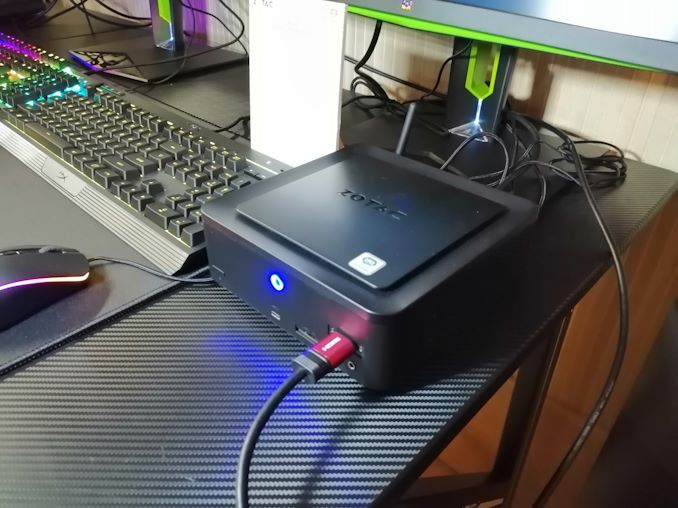
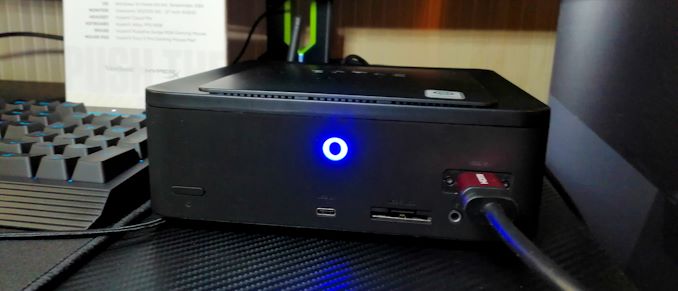
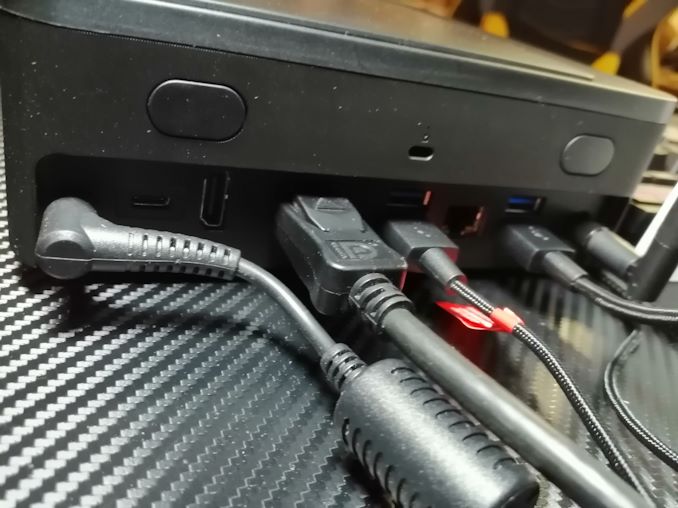
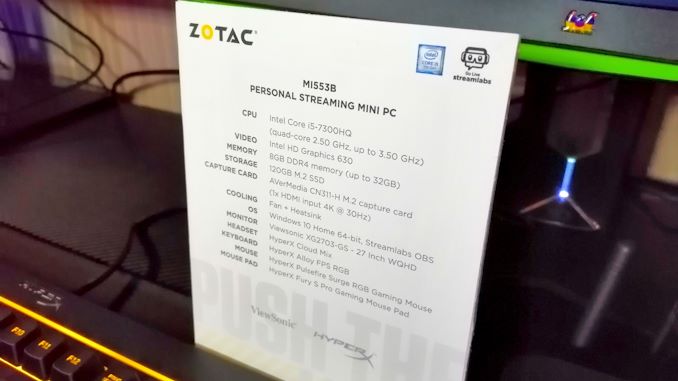

 Quote
Quote

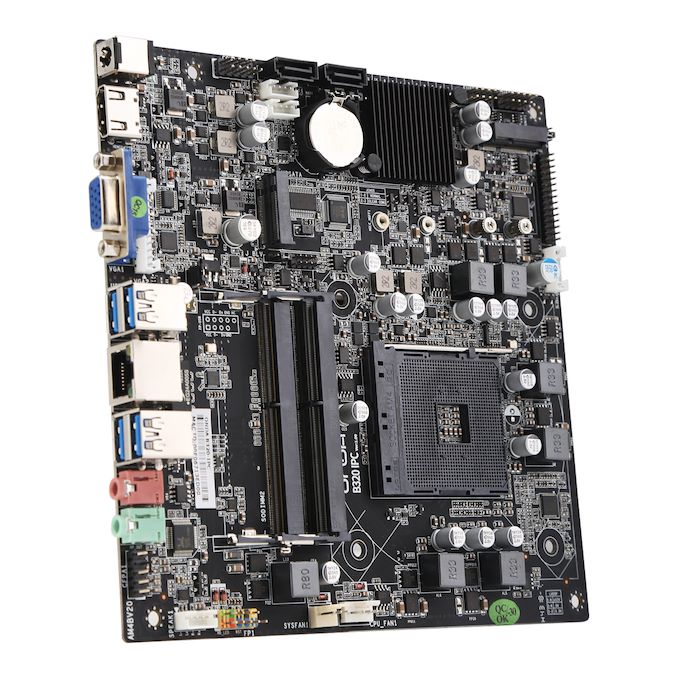
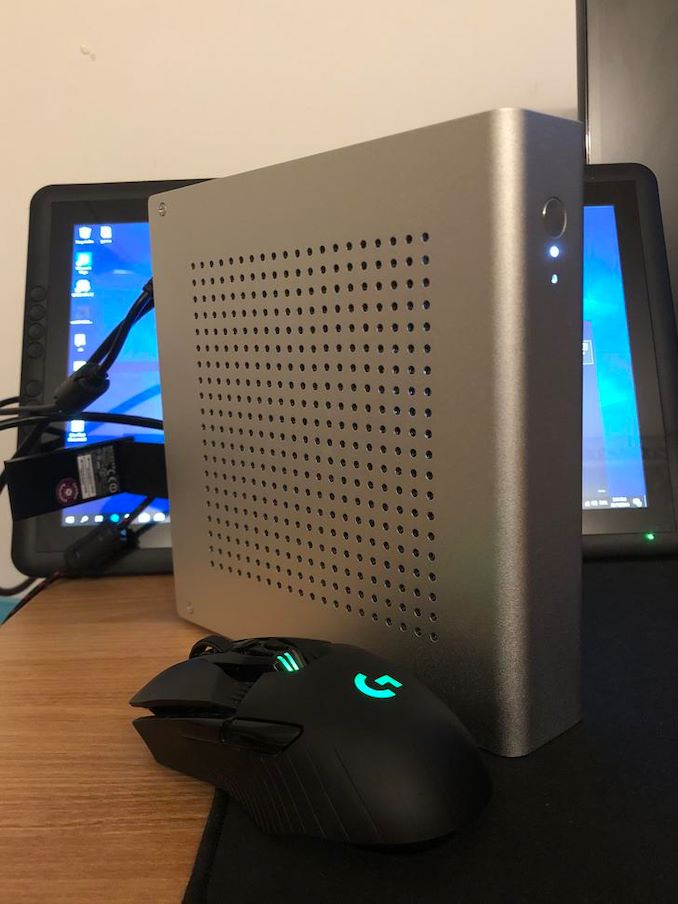


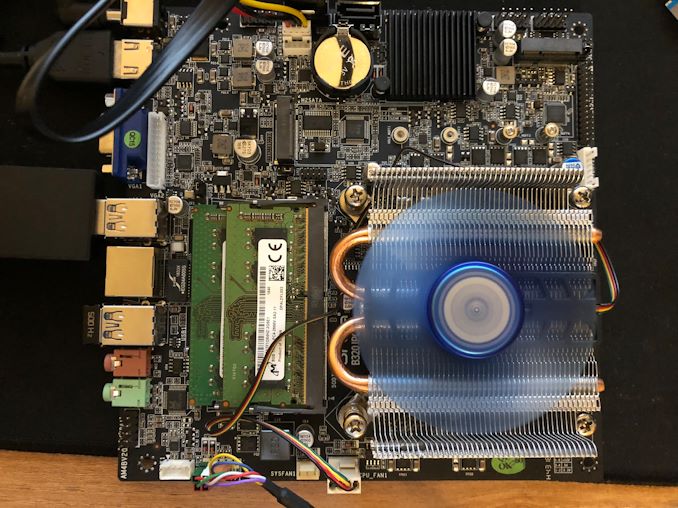



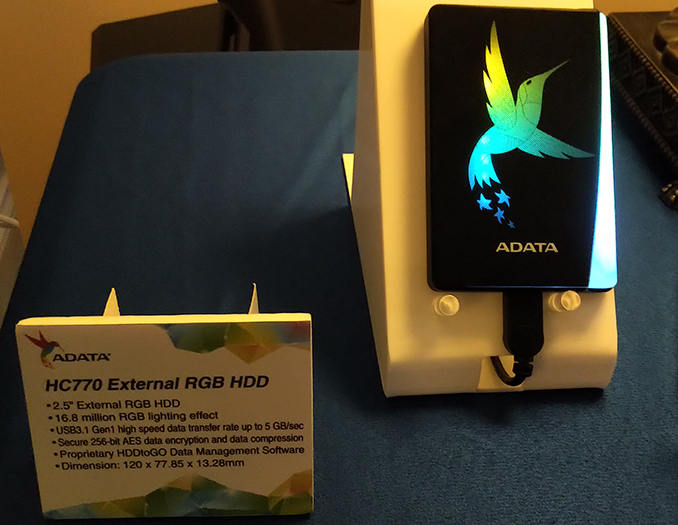
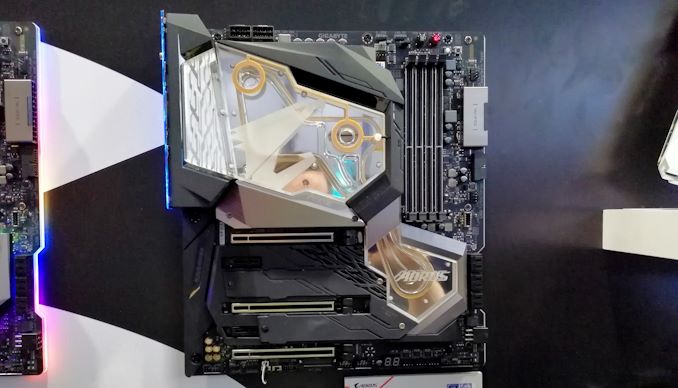
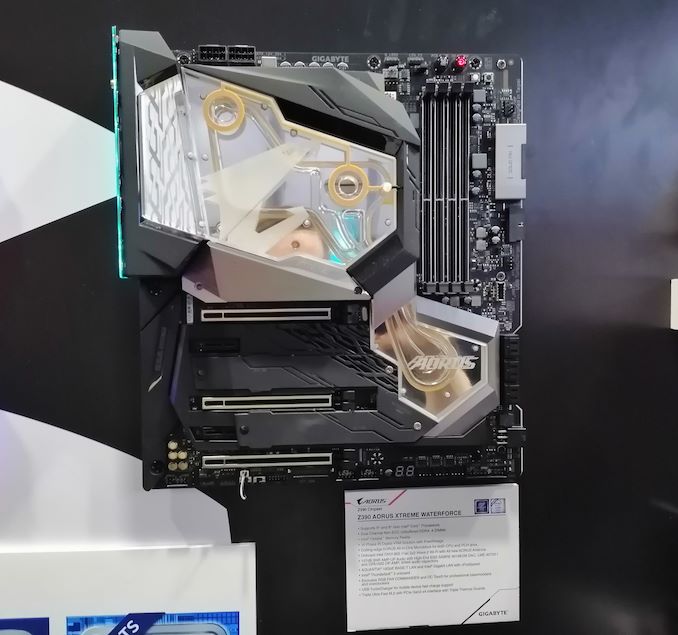
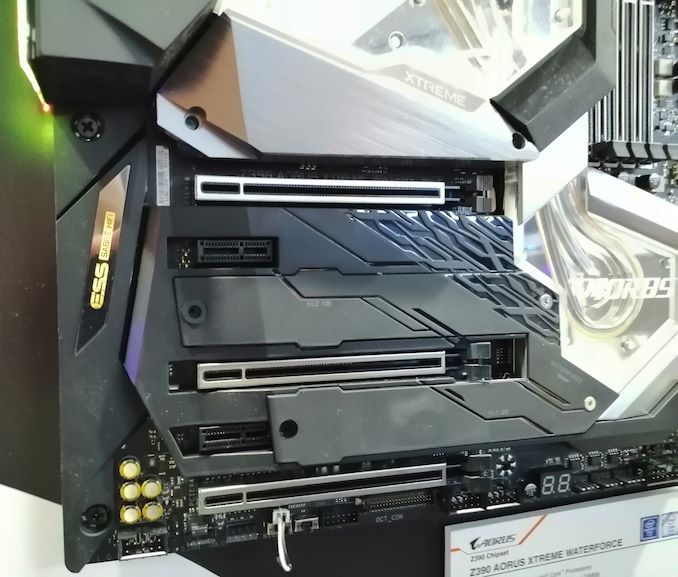
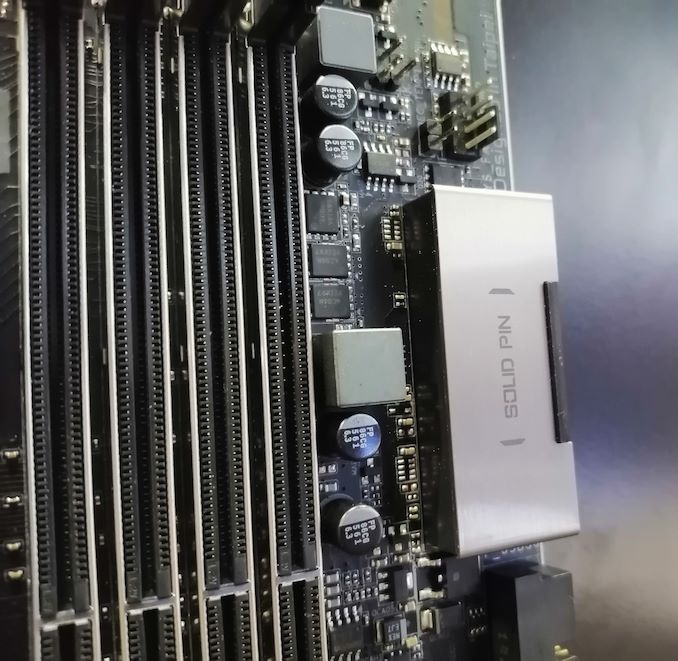
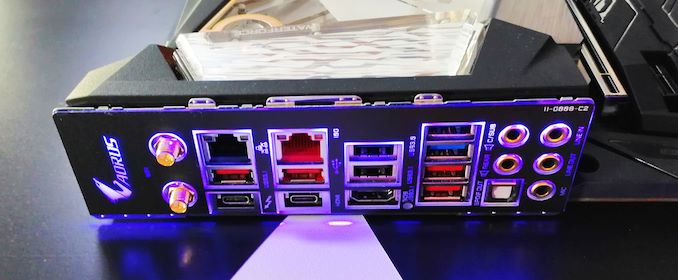
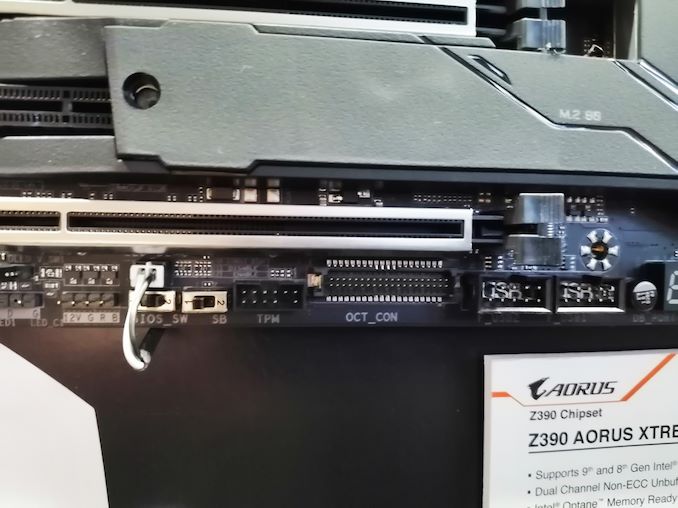

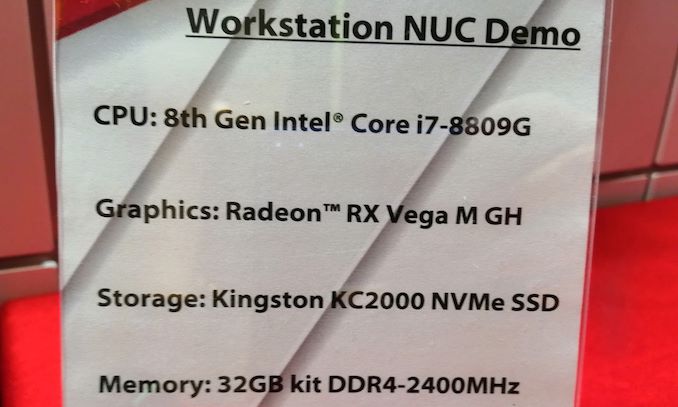
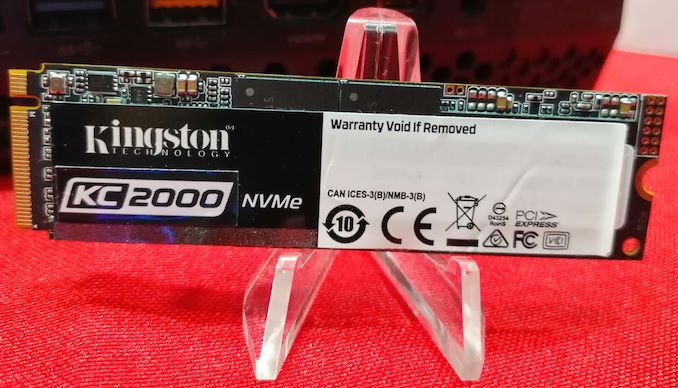
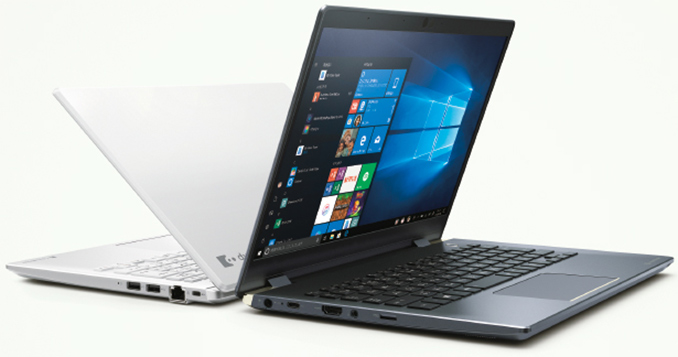
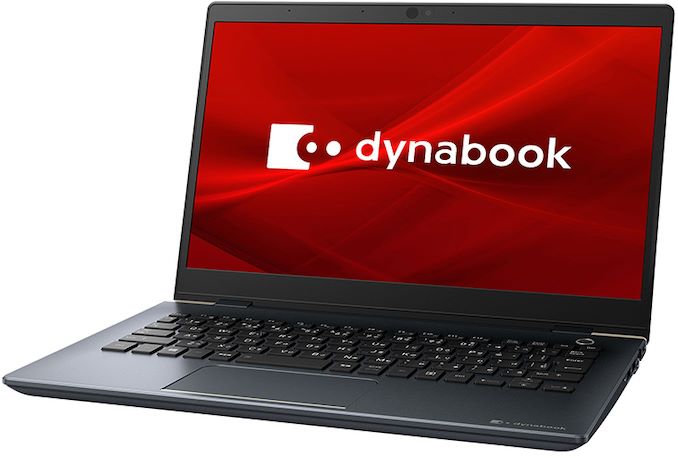

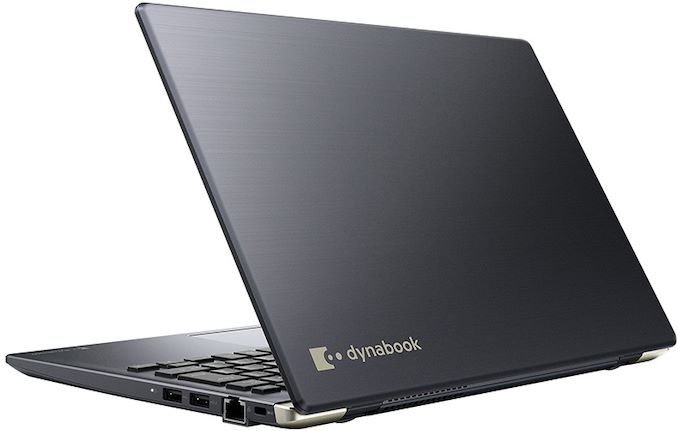
















Bookmarks